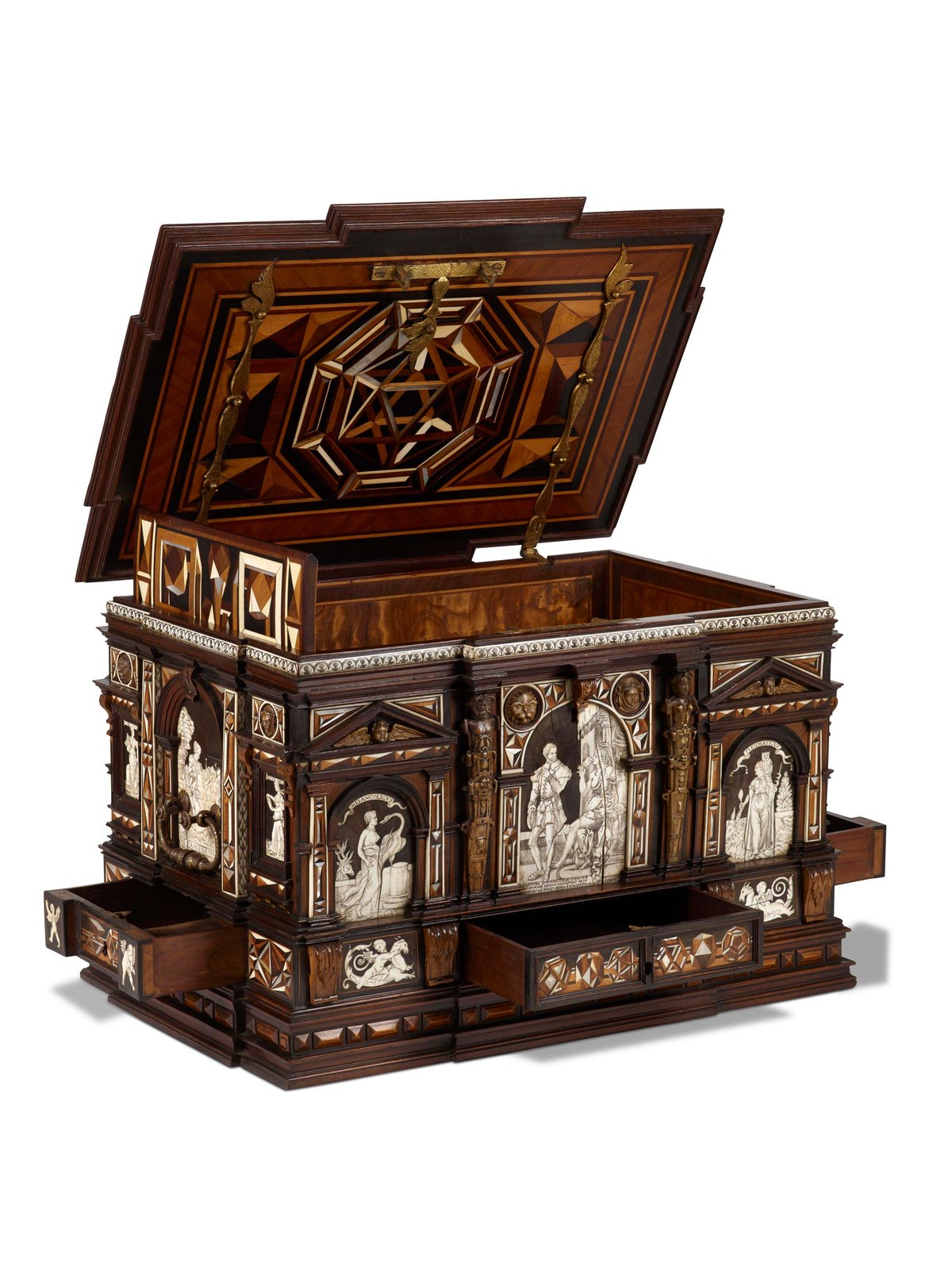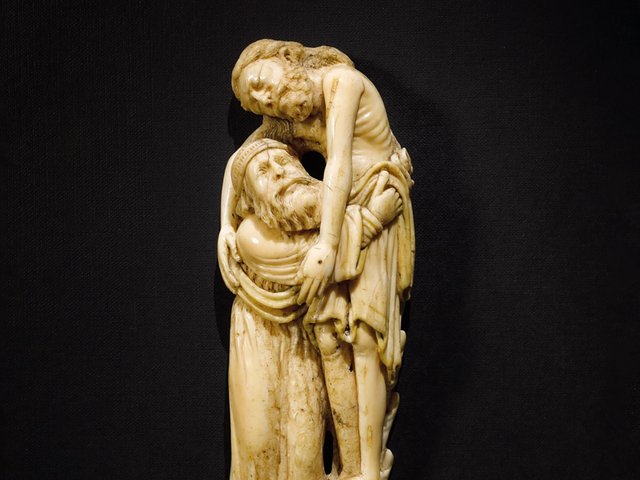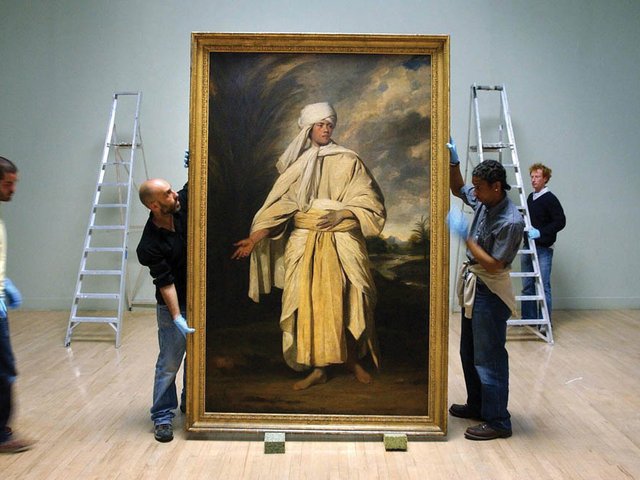UK museums have lost the opportunity to acquire one of the earliest known examples of a German renaissance Kunstkammer—a casket which would have served as a cabinet of curiosities. Brought to the UK 300 years ago, it was recently sold by the 13th Marquess of Lothian, who is better known as Michael Ancram, a former Conservative Party chairman. The Art Newspaper can report that both National Museums Scotland and the Victoria and Albert Museum (V&A) declined to buy the ivory-inlaid casket, which is valued at £750,000.
Although an unnamed US museum is interested in buying the casket, America’s strict regulations on ivory imports and sales means that the two London dealers which own it are unwilling to send it there. The casket could possibly legally go to the US, because it is an antique and contains only a small proportion of elephant ivory, but the dealers are very wary about the situation.
Alexandra Toscano, of Trinity Fine Art, says that “there are risks that the casket might be held up” by the US Fish & Wildlife Service’s Office of Law Enforcement. She believes that there is even a danger that the casket could be “confiscated and destroyed”.
The exquisite casket is designed to represent a symbolic model of an Italian palazzo. Its external surfaces are covered with mother-of-pearl, fruitwood and ebony, inlaid with carved alabaster and engraved ivory. The ivory panels, one of which has the inscribed date 1565, incorporate a complex iconography relating to the classical world and renaissance values.
The most striking feature of the marquetry is the illusionistic polyhedra decoration. New research reveals that the maker was the so-called Nuremberg Master of Perspective, an anonymous craftsman who is believed to have made ten other surviving pieces of marquetry furniture. This casket is the most elaborate of his oeuvre.
The use of precious materials and superb craftsmanship suggests that the casket was commissioned for a prince. Its first traced owner was probably Karl I Ludwig (1617-80), the Elector Palatine.
The casket had come to the UK by around 1720, when a walnut stand was commissioned from an important cabinet maker, most likely James Moore. It had probably been brought to Britain by the 3rd Duke of Schomberg in around 1690, and was given as a wedding present to his granddaughter when she married the 4th Marquess of Lothian in 1735. The casket then remained in the Lothian family and was at Newbattle Abbey, their stately home outside Edinburgh, until the 1930s. Unpublished until recently, it has only been exhibited once, in Glasgow in 1882.
In 2017 Ancram sold the casket at Sotheby’s, where it fetched £118,750. That same year he also controversially sold a pair of Assyrian reliefs from Newbattle, which went for £8m (the proceeds of the reliefs were split between him and an adult education college which was established in the mansion in 1937).
The buyer of the casket at Sotheby’s was Munich-based Georg Laue, who runs the Kunstkammer gallery. Trinity Fine Art then joined him as the co-owner. Having researched the casket and undertaken light conservation, they valued it at £750,000 and applied for a UK export licence. This figure was accepted by an independent valuer for the Export Reviewing Committee.
The committee recommended that an export licence should be deferred, to allow a UK buyer to match the sum. Toscano says that they would have offered a museum discount on the £750,000 figure. Although the licence was deferred until 11 July, no UK museum came forward to buy the casket.
The V&A holds the finest UK museum collection of furniture, but it decided against trying to acquire the casket, leaving it to National Museums Scotland—because of the Lothian family’s Scottish links.
National Museums Scotland eventually decided against buying the casket. A museum spokeswoman says that “after careful consideration by our acquisitions committee, we are withdrawing from discussions on acquiring the Newbattle Casket”. She was unwilling to clarify whether this was because the price was considered too high or if fundraising proved too difficult.
With the lack of response by UK museums and the problems of US ivory regulations, the Nuremberg casket may now go to a German museum. If not sold earlier, it is likely to go to Tefaf Maastricht art fair in March 2020. In the meantime, the casket remains on display (by appointment) at Trinity Fine Art until 30 July.




